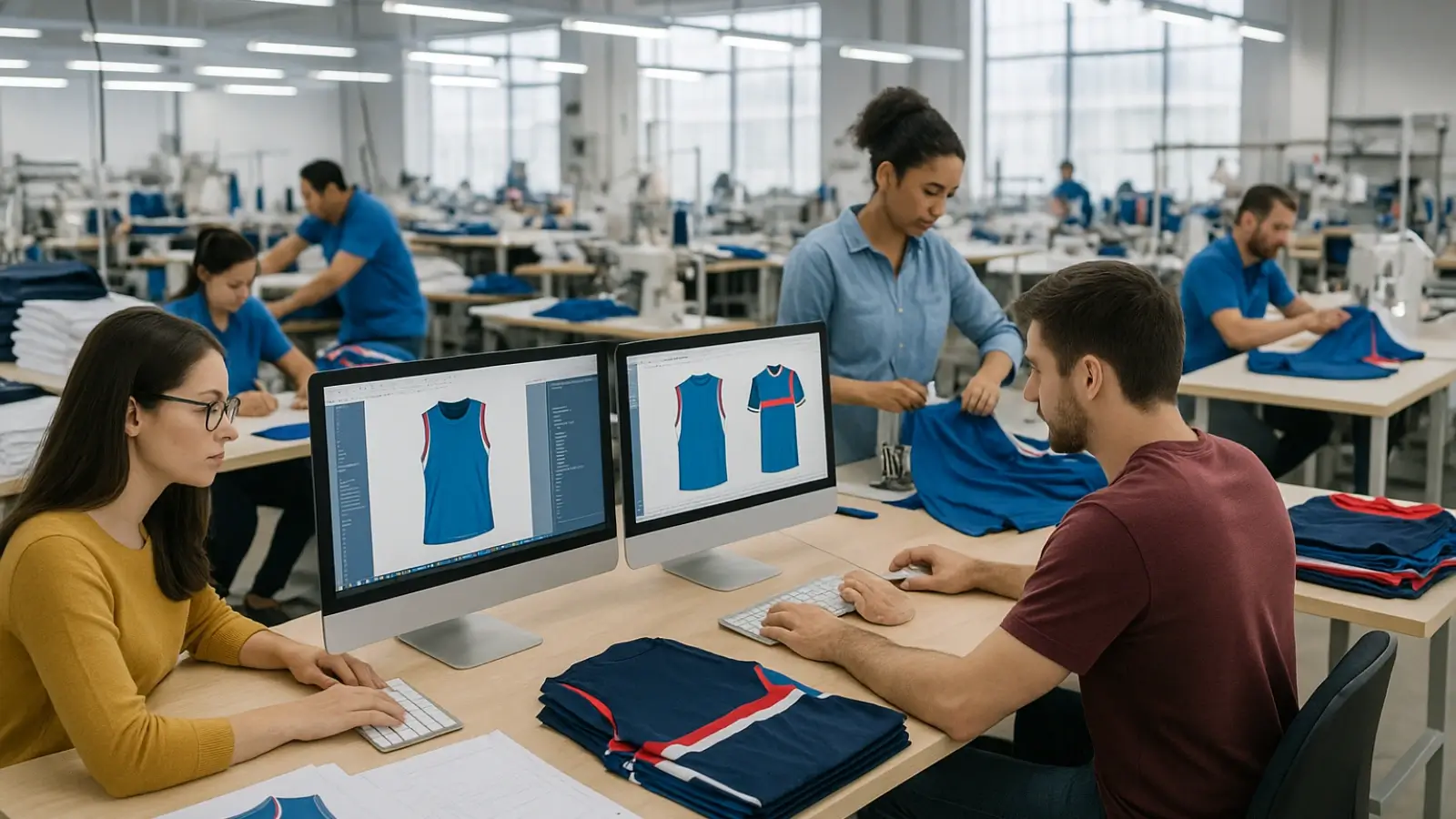


Launching a new sportswear line or outfitting a small club should be exciting, not risky. Yet many young brands and teams discover that the lowest quote can become the costliest mistake. For example, one start-up ordered custom uniforms from an unfamiliar supplier and found half the shipment arrived late and the rest didn’t match the approved design. Their launch was postponed and unsold stock piled up.
This situation is common in the sportswear industry, where high minimum order quantities, long lead times and inconsistent quality can derail a promising project. For emerging brands, every delay or error drains cash flow and erodes customer trust.
The good news is that today’s manufacturing landscape offers more flexible options. By understanding how OEM production and small-batch customization work — and what to look for in a partner — new brands can bring high-quality gear to market faster with less financial risk. This guide explains both approaches, highlights the key capabilities to check before you commit, and shares practical tips for avoiding common pitfalls.
For many emerging sportswear labels, building an entire production pipeline from scratch is unrealistic. Designing patterns, sourcing fabrics, managing workers and meeting international standards all require time and capital that a young company may not have. One way to bridge this gap is to work with a manufacturer that offers OEM sports clothing services.
Under an OEM (Original Equipment Manufacturer) model, you supply your brand identity — logo, colours, artwork and any special features — and the factory provides the rest. Using its established templates, fabric sources and quality-control processes, an OEM partner can produce your collection quickly and to consistent standards.
This approach shortens development cycles, lowers your upfront investment and still lets you sell products under your own label. For a new brand aiming to launch on time, or a team wanting a professional look without the headaches of building a supply chain, OEM production is a reliable and proven route.
While OEM production helps you launch quickly, it still requires a commitment to a certain volume. For a brand testing new designs or entering a niche market, ordering hundreds of units can be risky. This is where small batch sportswear customization becomes a practical option.
With small-batch customization, you can order only what you need — sometimes as few as two sets per style — and still receive the same professional fabrics, stitching and printing methods used in larger runs. Turnaround times can be as short as 15 days, which means you can test multiple designs, gather customer feedback and refine your offer before investing in larger orders.
This approach cuts inventory costs, speeds up learning cycles and lets you respond to trends or seasonal demand almost in real time. For start-ups and small teams, it’s an affordable way to look professional without carrying the burden of excess stock.
Once you’ve chosen a production model, the next step is to evaluate whether a potential partner has the capabilities to support your brand’s growth. A modern sportswear manufacturer should do more than simply sew garments. Look for these essentials and note why each matters:
Choosing a supplier with these integrated strengths improves quality and delivery while reducing the number of partners you need to manage — freeing you to focus on branding and customer engagement.
Knowing what a supplier claims to offer is one thing; confirming it before you place an order is another. Careful verification can save you delays, hidden costs and reputational risk. Here’s how to check:
By taking these steps before committing to full production, you reduce your exposure to false claims and set clear expectations with your supplier. This simple due diligence builds the foundation for a smoother relationship and better outcomes.
Production is only half the challenge. Once your order is complete, the next hurdle is getting it across borders and into your customers’ hands on time. Even the highest-quality uniforms won’t help if they’re stuck in customs or delayed by incomplete paperwork.
A manufacturer with proven export and compliance experience can take much of this burden off your shoulders. Look for suppliers that:
Working with a partner that combines manufacturing, export and compliance means fewer third parties to coordinate, faster turnaround and more predictable costs — especially valuable when you’re launching in multiple countries at once.
Even with the best intentions, sourcing sportswear internationally carries risks. Being aware of the most common red flags — and having simple, inexpensive ways to check for them — can save your brand time, money and frustration.
Watch out for:
Low-cost ways to reduce risk include ordering a small pilot batch, using third-party inspections and confirming every specification in writing. Keeping a simple communication log and documenting approvals may feel tedious, but it often becomes your strongest evidence if disputes arise. These checks help prevent late shipments, inconsistent quality and unexpected bills.
After learning about OEM options, small-batch customization, core capabilities and potential pitfalls, it’s time to turn insight into action. Here’s a simple three-step plan you can follow right away:
Following these steps will help you build a sourcing strategy that balances speed, quality and cost. For a new sportswear brand, combining OEM production with small-batch customization — and vetting partners carefully — offers a practical way to launch professionally while managing risk.